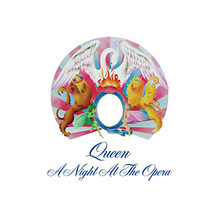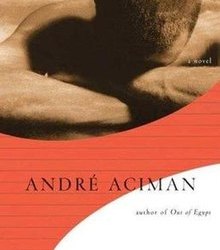Text
Reviews on the Arts

A Night At The Opera- Queen
Queen soars in their dynamic and experimental A Night At The Opera. Queen’s 1975 album is their most iconic journey through their innovative styles. Queen takes the extravagance and excellence of opera and adds iconic textures and power to create a masterpiece. A compilation of varying genres, Queen begins with a vexed homage to the anonymous … in “Death On Two Legs (Dedicated To…),” following with Freddie Mercury’s pleasant “Lazing On a Sunday Afternoon.” Roger Taylor’s “I’m In Love With My Car” showcases his raspy, powerful vocals and Brian May’s impressive guitar skills. The use of ethereal vocals creates that operatic tone that can be found throughout the album. John Deacon’s only song on the album is one of the band’s most well-known. “You’re My Best Friend” uses the band’s incredible harmonies to create a charming ‘70s tune. May takes the lead in a country-laden “‘39” with acoustic guitar and easy vocals and tells of a time long ago in this unorthodox song. “Sweet Lady” is the most chaotic; guitars, drums, and Mercury’s shouts meld together and contrast the tone of “‘39.” Mercury’s romanticism picks up again in “Seaside Rendezvous” and gives musical theater-like vocals and instrumentation with a joyous feel. “The Prophet’s Song” is the intermission, and an exquisite, experimental voice in the album. It is a journey in itself. Acoustic guitar, harp, and a delicate warning to “listen to the wise man” matures into an eclectic prophecy of doom. Freddie’s layered vocals in acapella represent musical genius and a foreboding lead to the second act of Queen’s theater. “Love of my Life” has a harp and trills to give it a regal, lost melody. May takes the lead again, this time with simple melody and a ukulele in “Good Company,” another vastly different stray from orthodox rock. The climax of the album is the infamous “Bohemian Rhapsody.” Starting with acapella pianissimo, the song builds slowly. Riveting, poetic lyrics coupled with grand instrumentation, specifically the guitar solos, tell a story like no other. Embracing the true nature of opera, the title of the album comes to a head with “Rhapsody’s” passionate dynamics, and ends in the final cadence “anywhere the wind blows.” The finale is an instrumental take on “God Save the Queen,” with drum raps and muted guitar for a final bow.

Call Me By Your Name- Andre Aciman
Andre Aciman’s novel Call Me By Your Name is breathtaking. Overwhelming, passionate desire is formed between 17-year old Elio and his father’s houseguest, Oliver. An older Elio narrates the story of that unforgettable summer. Against the backdrop of the hot Italian Riviera, the two slowly fall into each other. Their relationship is defined by longing, desire, and the deepest kind of intimacy. The title of the novel is telling; Elio wonders, “Is it your body that I want… or do I want to slip into it and own it as if it were my own?” When they are alone, and completely together, they call each other by their own names, a closeness that is rare and brilliant. The seductive, confident Oliver is the last person you think would come close to the insecure, deeply infatuated Elio, but that is what makes the story so invigorating. We discover that Elio is bold and Oliver struggles with his own deep desire. The most invigorating metaphor is the story of San Clemente. A poet wrote “The San Clemente Syndrome” while longing for his home in Rome. He didn’t want to go back with it unfinished, but in the Basilica of San Clemente, it became full of life. Elio longed for Oliver, though he “felt galaxies away.” He felt inferior and immature, and only felt complete with Oliver. Oliver is Elio’s San Clemente. The short time they spend together is unapologetically bare. The combination of sexuality, passion, and humanity makes this story memorable and beautiful. The pure intimacy and short timespan holds their relationship in a time that they can never relive nor forget. “Zwischen Immer und Nie. Between always and never.”

The King’s Speech
The King’s Speech, directed by Tom Hooper, is the story of King George VI and his speech therapist, Lionel Logue. The first scene is tense and anxious, much like Albert, future King George VI. It’s his first public speech in 1925. He walks solemnly to the arena and the crowd stares. His stammer is revealed, and we look away in secondhand embarrassment. Hooper’s sets are long and narrow, as Albert and his wife walk through narrow hallways to a microphone with thousands of people in close proximity. We feel cramped and nervous, a parallel to the character’s condition. Colin Firth plays a formal, reserved, and hopeless king. His wife (Helena Bonham Carter), supportive and sympathetic, finds a very successful speech therapist (Geoffrey Rush). Enter Lionel Logue. He is a direct contrast to Albert; he is bold, forward, and persistent. Lionel is a failed Australian actor, and he shows his views on royalty in their first meeting, demanding they speak on a first-name basis. Though he is reluctant to be called “Bertie,” Albert accepts Lionel’s help. The two develop a friendship that goes far deeper than Albert’s stammer. Written by David Seidler, The King’s Speech explores an unlikely friendship masterfully. It is quite humorous at times; Albert shouting obscenities at the top of his lungs with Lionel urging him on coming to mind. It also gives a glimpse into Albert’s complicated issues with his childhood and how Lionel forces him to confront them. This movie is interesting, because it tells a story that was very much ignored at its time. In the backdrop is the story of his Albert’s predecessor, David (Guy Pearce), and his messy abdication to marry the thrice divorced Wallis Simpson. Considered a much more interesting story by some, The King’s Speech tells the story of a monarch who was forced to confront his own issues to comfort a nation at war. By the time we reach the famed speech, we get the same feel as in the first scene. A nervous Albert, all eyes and ears on him- but this time Lionel is by his side. Through his coaching, he approaches the nation with a strengthened confidence. The scene ends quite differently. Instead of humiliation, there is triumph in the nation and Lionel and Albert’s friendship.
1 note
·
View note